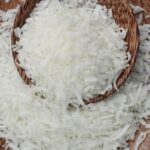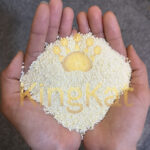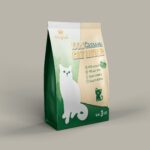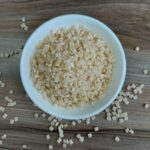CASHEW NUT SHELL OIL
In industrial applications, the choice of binders can significantly affect product performance, cost efficiency, and environmental sustainability. Tapioca starch, a natural binder derived from cassava roots, and synthetic binders, often petroleum-based, represent two contrasting approaches to fulfilling industrial needs.
This article explores the comparative advantages and limitations of tapioca starch and synthetic binders, offering insights for industries looking to optimize their processes while addressing sustainability goals.
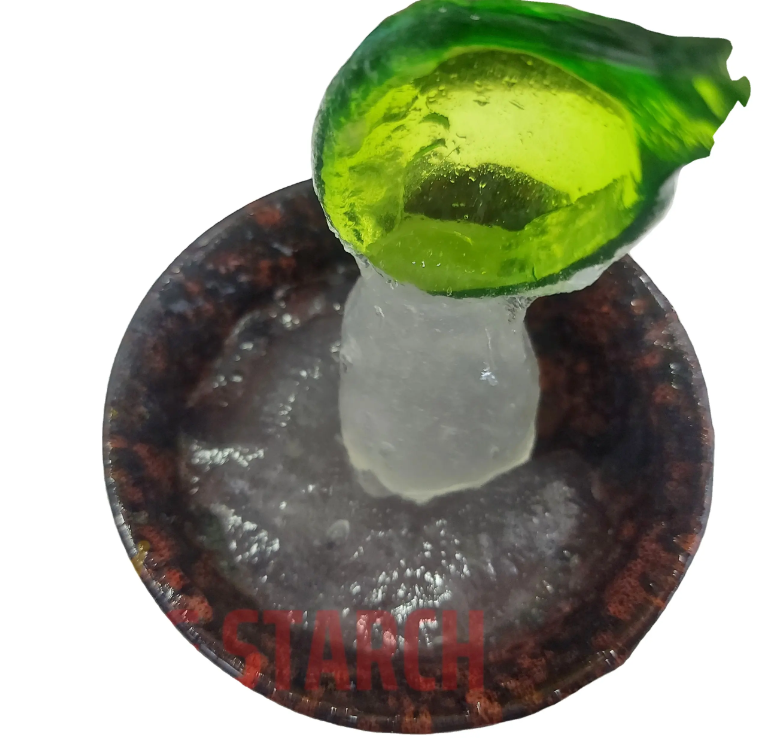
Table of Contents
Toggle1. Overview of Tapioca Starch and Synthetic Binders
Tapioca Starch:
Tapioca starch is a plant-based polymer known for its versatility in various industrial applications. Its natural binding, thickening, and adhesive properties make it suitable for industries such as paper, textiles, and food production.
Key Characteristics:
- Biodegradable and eco-friendly.
- Derived from renewable cassava crops.
- Free of toxic residues.
Synthetic Binders:
Synthetic binders, typically produced from petroleum or chemical polymers, are engineered to meet specific performance requirements. They are widely used in construction, adhesives, and coatings.
Key Characteristics:
- Highly durable and customizable.
- Consistent performance under extreme conditions.
- Often associated with environmental concerns due to non-biodegradability.
2. Performance Comparison
Adhesive Strength and Flexibility
- Tapioca Starch: Provides moderate adhesive strength and flexibility, ideal for lightweight applications such as paper and textile production. It offers smooth coating capabilities but may require modifications for demanding environments.
- Synthetic Binders: Known for superior adhesive strength and resistance to water, heat, and chemicals, synthetic binders outperform in applications requiring high durability.
Environmental Impact
- Tapioca Starch: Being biodegradable and sourced from renewable crops, tapioca starch aligns with global sustainability goals. It breaks down naturally without harming ecosystems.
- Synthetic Binders: Non-biodegradable and often derived from fossil fuels, synthetic binders contribute to environmental pollution, including microplastic accumulation.
Cost Efficiency
- Tapioca Starch: Generally more cost-effective in regions where cassava is abundantly grown. However, its performance may need enhancement through additives, slightly increasing production costs.
- Synthetic Binders: While initially costlier due to raw material and production complexities, their durability can reduce long-term maintenance costs in certain applications.
Safety and Health Considerations
- Tapioca Starch: Non-toxic and allergen-free, making it ideal for food-grade and consumer-safe applications.
- Synthetic Binders: May emit volatile organic compounds (VOCs) during production or use, posing health risks in poorly ventilated environments.
3. Industry Applications
Paper and Packaging
- Tapioca Starch: Used as a coating and adhesive for paper and cardboard. Its biodegradability makes it ideal for eco-friendly packaging solutions.
- Synthetic Binders: Common in high-strength adhesives for industrial-grade packaging, but less sustainable.
Textiles
- Tapioca Starch: Preferred for warp sizing, enhancing thread strength without environmental risks.
- Synthetic Binders: Deliver greater performance in water-resistant or high-performance textiles.
Construction
- Tapioca Starch: Limited usage due to lower resistance to moisture and heavy loads.
- Synthetic Binders: Dominant choice in construction materials such as sealants, adhesives, and coatings.
4. Challenges and Limitations
Tapioca Starch:
- Moisture Sensitivity: Susceptible to breaking down in humid conditions unless chemically modified.
- Consistency Variations: Quality can vary based on crop conditions and processing techniques.
- Limited Applications: Performance may fall short in highly demanding industrial environments.
Synthetic Binders:
- Environmental Concerns: Non-biodegradable, contributing to long-term ecological issues.
- Health Risks: VOC emissions can impact worker health and air quality.
- Fossil Fuel Dependency: Production relies on finite resources, making it less sustainable.
5. Choosing the Right Binder: Factors to Consider
Application Requirements:
- For lightweight, biodegradable applications, tapioca starch is ideal.
- For heavy-duty, weather-resistant applications, synthetic binders may be necessary.
Sustainability Goals:
- Businesses prioritizing eco-friendly practices should lean toward tapioca starch or hybrid solutions.
Cost and Availability:
- Assess the local availability and cost of raw materials. Tapioca starch is more economical in regions with abundant cassava production.
Regulatory Compliance:
- Ensure the selected binder meets safety and environmental standards for the intended industry.
6. Conclusion: A Balanced Approach
The choice between tapioca starch and synthetic binders depends on the specific requirements of the application and the industry’s sustainability goals. Tapioca starch stands out for its eco-friendly profile and cost efficiency in suitable applications, making it a preferred choice for industries transitioning toward greener practices. Meanwhile, synthetic binders remain indispensable for high-performance needs, though their environmental impact encourages the exploration of hybrid or alternative solutions.
At Abimex Group, we specialize in supplying high-quality tapioca starch tailored for industrial applications, offering sustainable alternatives to synthetic binders. Contact us today to explore how our products can support your business goals while promoting environmental stewardship.



